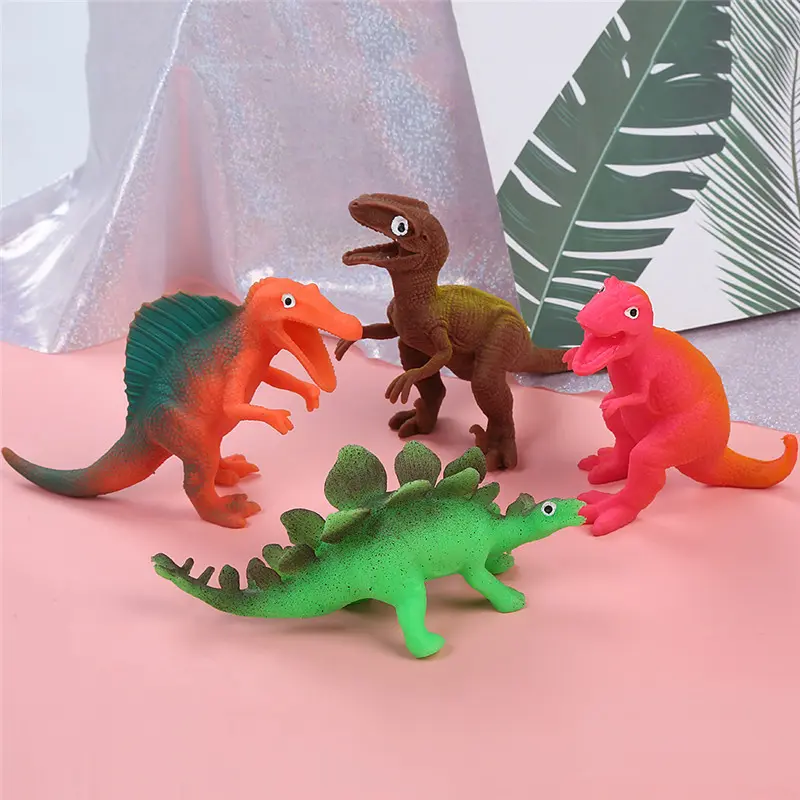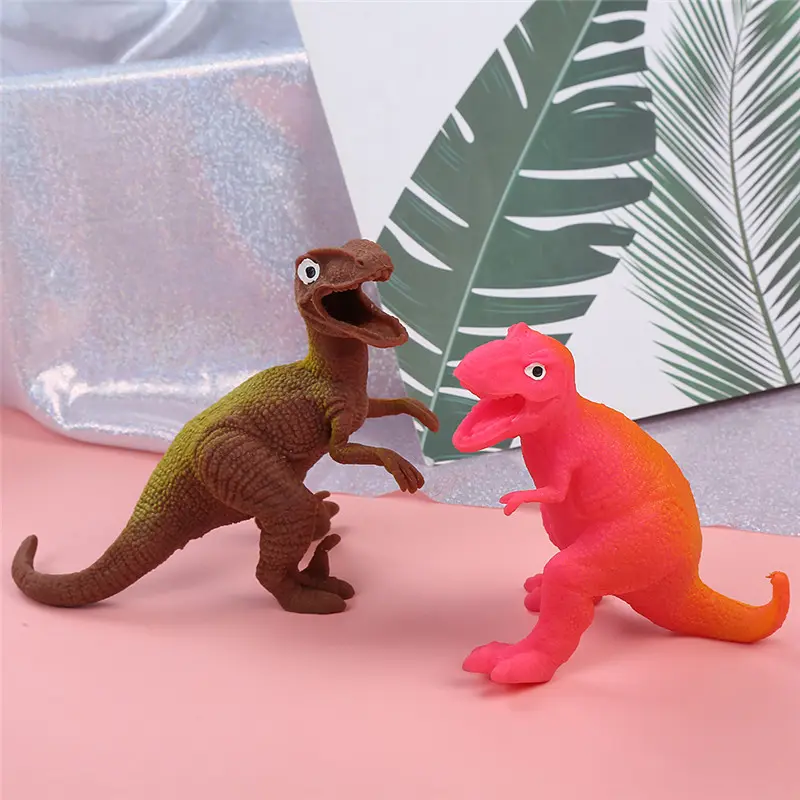Cost Analysis of TPE Material Squeezy Toys Compared with Traditional Rubber
In today’s toy market, TPE material squeezing toys are gradually emerging, and their cost issues have attracted much attention from international wholesale buyers. The following will compare the cost of TPE material squeezing toys and traditional rubber from multiple aspects such as material cost, processing cost, comprehensive consideration of performance and cost, market trends and cost change forecasts.
1. Overview of TPE Materials and Traditional Rubber
TPE (thermoplastic elastomer) is a new type of environmentally friendly material that has the high elasticity, high strength, and high resilience of rubber and can be injection molded. Traditional rubber mainly includes natural rubber and synthetic rubber. Natural rubber is made from latex of rubber trees, and synthetic rubber is produced by chemical synthesis. Both need to go through complex processes such as vulcanization to have performance.
2. Material cost comparison
Price of raw materials
TPE material: The price of general-grade TPE is generally around 9,000~15,000 yuan/ton, the price of rubber-coated TPE is between 8,500~40,000 yuan/ton, and the price of smart wearable TPE is around 20,000~40,000 yuan/ton.
Traditional rubber: The current price of natural rubber is around 10,000~20,000 yuan/ton, the price of styrene-butadiene rubber in synthetic rubber is around 10,000~15,000 yuan/ton, the price of butadiene rubber is around 12,000~18,000 yuan/ton, and the price of chloroprene rubber is around 20,000~30,000 yuan/ton.
From the perspective of raw material prices, TPE materials overlap with traditional rubber price ranges. The price of some TPE materials is lower than that of traditional rubber. For example, general-grade TPE has certain price advantages over butyl rubber; but the price of some TPE materials with special properties is higher than that of ordinary natural rubber or synthetic rubber.
Comprehensive consideration of performance and price
TPE materials: TPE materials have a wide range of hardness, ranging from Shore 0A to 100A, which can meet the softness and hardness requirements of different squeezing toys. At the same hardness, TPE materials with different formulas can reduce costs by adjusting the formula. Its density is generally between 0.9-1.3g/cm³. TPE materials with low hardness have lower density. The required material weight is light under the same volume and the cost is relatively low.
Traditional rubber: Although natural rubber has certain elasticity, its weather resistance and aging resistance are poor, and it is easy to breed bacteria and mold, which affects the service life of toys; although synthetic rubber has improved in some properties, it needs to add additives such as vulcanizers and accelerators during processing, which increases material cost and complexity.
3. Processing cost comparison
Processing process complexity
TPE material: It has good processing performance and can be formed by various thermoplastic plastic processing methods such as injection molding, extrusion, blow molding, etc. It has high processing efficiency and does not require vulcanization. The molding cycle is short, which can greatly reduce production energy consumption and time costs.
Traditional rubber: Processing requires complex processes such as rubber refining, molding, and vulcanization. The vulcanization process needs to be carried out at a specific temperature, pressure, and time. Different rubber formulas have different vulcanization conditions, and the process control is complex. The vulcanization time is long. For example, natural rubber vulcanization takes 10-30 minutes, while synthetic rubber takes longer, resulting in low production efficiency and high energy consumption.
Mold cost
TPE material: Due to its good fluidity, it can fill complex mold cavities. The requirements for mold precision and strength are slightly lower than those for traditional rubber, and the mold production cost is also relatively low.
Traditional rubber: The vulcanization process will generate greater pressure, and the mold strength and precision requirements are high, and the mold cost is relatively high.
Production efficiency and energy consumption
TPE materials: can be directly vulcanized by rubber injection molding machines, the time is shortened from about 20 minutes to less than 1 minute, and no complex preparation process such as preheating is required, and the production efficiency is high. Most thermoplastic elastomers do not require vulcanization or the vulcanization time is very short. Taking the energy consumption of high-pressure hose production as an example, rubber is 188MJ/kg and TPE is 144MJ/kg, which can save energy by more than 25%.
Traditional rubber: long processing cycle and high energy consumption. For example, in rubber injection molding, the rubber needs to be heated to a high-temperature molten state and then injected into the mold. The mold also needs to be cooled and shaped by cooling water. The whole process is time-consuming and energy-consuming.
4. Comprehensive consideration of performance and cost
Product performance and cost balance
TPE material: general temperature resistance, the highest use temperature is about 130-150℃, but the use performance is stable at room temperature, which can meet the daily use needs of most squeezing toys, and it has good flexibility, elasticity and compression resilience, which can provide good touch and durability for toys, reduce product damage caused by material fatigue, and thus reduce after-sales costs.
Traditional rubber: Although its heat resistance and other properties are better than TPE in some aspects, its shortcomings such as easy aging, easy deformation, poor oil resistance and poor solubility may cause toy performance to decline in long-term use, affect user experience and product reputation, and increase after-sales costs.
Environmental protection and sustainable cost
TPE material: It is an environmentally friendly and non-toxic material. The waste generated during the production process can be directly recycled and reused. It not only meets the requirements of international environmental regulations, but also reduces the waste of raw materials and processing costs, reduces the risk of environmental pollution, and helps enterprises establish a good environmental image and enhance the competitiveness of products in the international market.
Traditional rubber: Harmful substances may be released during the production process, such as hydrogen sulfide gas produced during the vulcanization process. Improper treatment of waste rubber can easily cause environmental pollution, and the recycling rate is low and the treatment cost is high. It does not conform to the current trend of sustainable development and may face higher environmental policy risks and costs.
5. Market trends and cost change forecasts
Raw material price trends
TPE materials: With the development of the petrochemical industry and the continuous advancement of production technology, the production scale of TPE raw materials has gradually expanded, and the cost is expected to be further reduced. At the same time, investment in research and development and innovation will continue to increase, and new TPE materials with better performance and lower cost may be developed, providing more cost-effective options for the pinch toy market.
Traditional rubber: Natural rubber is greatly affected by factors such as climate and planting area, and price fluctuations may be more obvious; synthetic rubber is closely related to oil prices. With the increasing tension and price fluctuations of oil resources, the cost and price of synthetic rubber will also face certain uncertainties, and it is difficult to achieve a significant long-term stable decline.
Processing technology development
TPE materials: Processing technology will continue to be optimized, such as the precision and efficiency of injection molding will be further improved, and the combination with other processing technologies will be closer, such as 3D printing technology, etc., which can realize the design and production of more complex and personalized squeezing toys, reduce the production cost of small batches and multiple varieties, and meet the diversified and customized needs of international wholesale buyers for products.
Traditional rubber: The processing technology is relatively mature, and the room for improvement is relatively limited. Due to its processing complexity, it may face high production costs and long production cycles when dealing with small batches and multiple varieties of orders, and gradually lose its market competitiveness.
In summary, TPE material squeezing toys have certain advantages over traditional rubber in terms of material cost, processing cost, comprehensive consideration of performance and cost, and market trends. Its cost advantage is mainly reflected in the competitiveness of raw material prices, the improvement of processing efficiency, and the long-term benefits of environmental protection. In terms of performance, although TPE is slightly inferior to traditional rubber in individual properties such as heat resistance, its comprehensive performance and use cost are more optimized. With the continuous development of the market and the continuous advancement of TPE technology, TPE material squeezing toys are expected to gain wider application and recognition in the international wholesale market, bringing more cost-effective options to buyers.
Post time: Apr-28-2025

